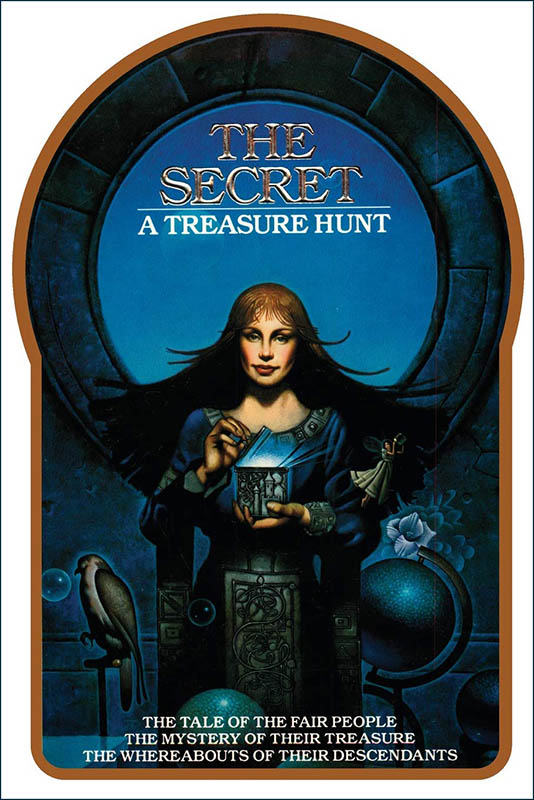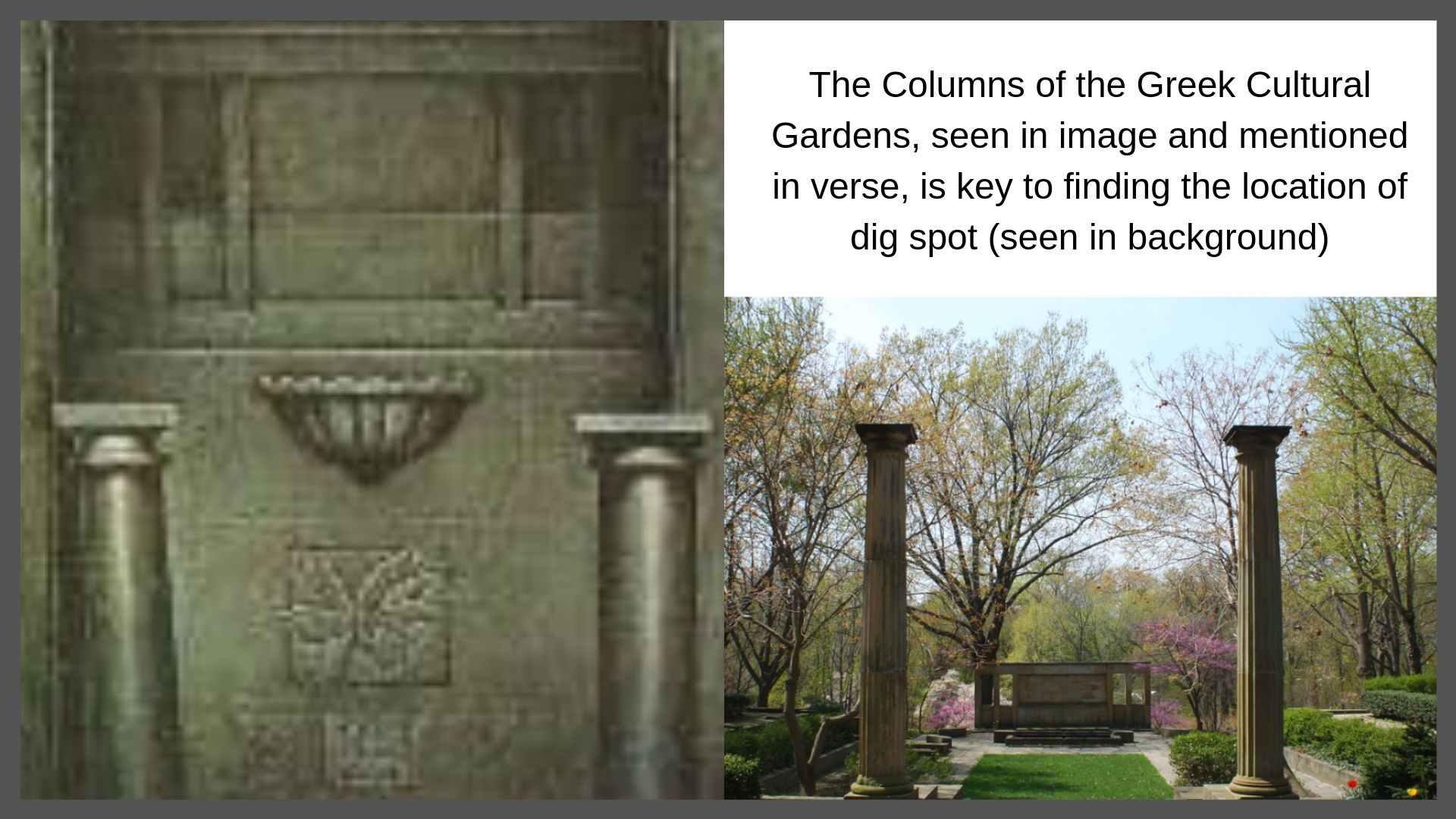12 Tips to Help you Search for The Secret Casque
 Here are some recommendations if you are ALL IN for searching for one of the 9 remaining casques buried by Byron Preiss. Preiss published a book called The Secret: A Treasure Hunt in 1981, in which he put clues to buried treasure. Well, he buried 12 casques in acrylic boxes and inside each of the ceramic casques is a ceramic key. If you turn in the key you get a jewel. The jewels are worth approximately $1,000-$1,200 and won’t make you rich, but it’s not about the treasure, it’s about the hunt. And solving the puzzle!
Here are some recommendations if you are ALL IN for searching for one of the 9 remaining casques buried by Byron Preiss. Preiss published a book called The Secret: A Treasure Hunt in 1981, in which he put clues to buried treasure. Well, he buried 12 casques in acrylic boxes and inside each of the ceramic casques is a ceramic key. If you turn in the key you get a jewel. The jewels are worth approximately $1,000-$1,200 and won’t make you rich, but it’s not about the treasure, it’s about the hunt. And solving the puzzle!
Unfortunately, Byron Preiss died in a car accident in 2005, but his family is honoring the treasure hunt and will provide the jewel if you can prove you found the casque and the key.
The clues for each of the 12 hunts are laid out in a verse (poem) by Preiss, and a painting by artist J. J. Palencar. A great reference is The Secret (a treasure hunt). I also highly recommend you buy the actual book and read all of it.
Here are some tips I’ve put together to help you search for your treasure, no matter what city you are working.
#1: Don’t contact the artist of the paintings (J.J. Palencar) or the Preiss family. Neither will give you clues or tell you if you’re close. They are getting inundated with email since The Secret has been televised and promoted on the TV show Expedition Unknown.
#2: Watch all the episodes of Expedition Unknown on The Secret. They’re helpful.
#3. Study the paintings and the verses of the found casques. You’ll realize how simple and self-explanatory the clues are.
#4. Don’t “Over-Internet” it. There was no Internet in 1981 when Preiss created his puzzles and clues. If you’re Googling the clues and finding vague references that no one would have known in 1981, then you probably don’t remember what it was like in 1981. I do, I was 18! Back then if we had to research something we’d have to “go to the library” and I’m not sure he meant it to be that complicated. Try using just a map of your city, the verse, and the painting only. Yes, you can use Google street view to look at a place you cannot physically be, but realize you’re looking at it in current time. HE DID USE MAPS and there are maps embedded in the paintings.
#5. Realize that it probably took 1-3 months for Preiss to fly to all 12 locations and bury the casques. Then all 12 paintings had to be created before he could publish the books. Think about that timing: he knew it would be at least one year from the time he buried the casques until anyone started searching. Therefore the place had to be secluded and somewhere he believed would not be disturbed for years. He probably calculated that they’d have to stay buried for 1-10 years.
#6. Buy an acrylic box and bury it in your yard, at least 12-18″ underground. Go back later and probe the ground around it and feel what it feels like to “find it” with a probe, stick, or pole. It took me about 30 minutes to dig the hole about 13″ down, fill it in, and cover it up. I realize I’m almost twice Preiss’s age at the time he buried the casques, but it had to take him at least 20 minutes. And he had to be on his knees to place the casque in and backfill the earth. Even though he was “disguised” as a construction worker, he still had to be inconspicuous for 20-30 minutes. (I’m working on a video for this tip, and I’ll post it when it’s finished.) Read how I dug up my Faux Casque and what I learned!
#7. It’s a testament to Preiss’s skills that some of the casques still remain, but like Boston-many of these spots surely could have gone under construction in the last 40 years. Some construction crew member might have found a casque and thought it was a kid’s art project and tossed it. Some surely have been destroyed by a backhoe or two. The Greek Garden in Cleveland was completely reconstructed in 2004, the same year the casque was found, although I’m not sure if was before or after the men found it! Nevertheless, I predict that out of the remaining nine, only four or five still exist.
#8. The exact spot where the casques are buried are literally depicted in the paintings. Chicago: the fence. Boston: baseball diamond & Home Plate*. Cleveland: the wall. Exactly.
#9. Keep it SIMPLE, SIMPLE, SIMPLE. The clues in the verse are walking you through the city, the surrounding area, and then lead you to the spot where the casque is buried. Exactly.
#10. There are red herrings in both the verse and the paintings. Preiss put images depicting both the Italian Garden and the Greek Garden in Cleveland. But the wall was in the Greek Garden, where the casque was found.
#11. The entire book is an homage to the immigrants who built this country. Each city is chosen for its role in immigration of a certain group to America. Don’t forget that. Preiss used two quotes verbatim from the book Abroad in America: Visitors to the New Nation, 1776-1914. If you’re serious about the hunt, it might be worth perusing that book, too.
#12. And finally: This puzzle isn’t worth your safety or being arrested. If you’re at the point you want to dig, go with a partner, get permission, and be safe. Don’t go in the wee hours of the night.
* I’m not convinced the casque was buried at home plate in Langone Park (See #5), although I think it was close by. They found fragments while the site was under construction, so the exact place of burial is unknown.
